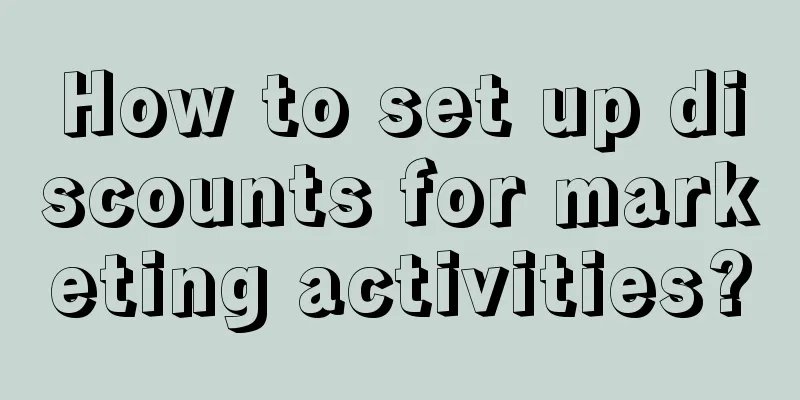The 9 most anticipated technologies in 2016 are within reach

|
Yesterday, a friend of mine lamented that he read different media articles and found that 2014 was the first year of VR (virtual reality), 2015 was the first year of VR, and 2016 was the first year of VR. It seems that the first year of VR will continue until 2018. Of course, there is no standard to judge which year is the first year of a new technology. However, it is a fact that VR is one of the most anticipated technologies in 2016. Everyone always has expectations for the new year. Now, Lei Xiaobian will look forward to the new technologies that will change your life and mine in 2016. Note that this is not talking about those distant black technologies, but technologies that are within reach in 2016.
AR (augmented reality) and MR (mixed reality) are not included here. Relatively speaking, VR technology is more mature and has more supporting content. Especially starting from the entertainment market, VR is expected to explode faster - whether it is the Internet, PC or mobile phone, entertainment is a crucial entry point. In 2015, star content providers such as the New York Times and NBA began to support VR content. Some VR game experience devices can already be seen on the streets. It is believed that many people have smelled the arrival of the content VR era. It is undeniable that many manufacturers, especially listed companies, use the VR concept to hype themselves, but which industry is not like this when it rises? The launch of Oculus products is a major landmark event in the popularization of the VR industry.
(Picture from NetEase Technology)
In 2014, Apple officially launched the CarPlay in-car system. Ferrari, Mercedes-Benz, and Volvo became the first batch of cooperating car manufacturers. BMW, Ford, GM, Honda, Hyundai, and Toyota are planned to be the second batch of supporting manufacturers. For a while, car owners were looking forward to having a digital experience comparable to Tesla in the car space. However, a year later, CarPlay was not popular. Mercedes-Benz and Volvo broke their promises. BMW and other car manufacturers did not support CarPlay in their first cars. Apple's progress in the automotive industry was not smooth. Now, Hyundai and other car manufacturers have begun to support CarPlay, and Apple also plans to enter the automotive market through the aftermarket car equipment market. CarPlay is expected to enter the year of popularization in 2016. This reminds people of the iPhone. After its launch in 2007, it was still a niche in the first few years. It took a period of time before the iPhone 4S was accepted by the mass market.
(Picture from NetEase Technology)
Smart TV is a technology that became widely popular in 2014-2015, and there are not many changes worth looking forward to in 2016. However, Lei Technology (WeChat ID: leitech) has seen a trend that the upgrade of TV is returning to the screen, whether it is OLED, quantum dot, curved or 8K, they are all upgrades of the screen itself. Curved screens are expected to become a new technology that will be widely popularized in 2016. Curved screens have a similar principle to IMAX. The screen has a certain curvature, which is more in line with human visual habits and improves the picture quality. This technology was still relatively expensive in 2015, but the price is constantly decreasing. After Xiaomi invested in TCL, it may launch curved screen TVs, and LeTV and other brands may follow suit.
(Picture from Fast Technology)
OLED stands for organic light-emitting diode. Compared with LCD screens, its screens are thinner and more transparent, with a wider viewing angle, better shock resistance, more suitable for curved and even foldable screens, and more power-efficient. It seems to be an ideal choice for smart mobile device screens. However, it has problems such as easy oxidation of organic materials, low yield and high cost, so it is only used by a few manufacturers such as Samsung. Technical defects and high costs are being gradually resolved. At the end of 2015, rumors that Apple phones would use OLED screens in 2017 were well-founded. Apple's first wearable device, Apple Watch, also uses OLED screens. OLED phones are likely to become mainstream. Before Apple, I believe that more mobile phone manufacturers will adopt a strategy of intercepting and joining the OLED camp. Consumers will have many opportunities to buy OLED phones in 2016.
Replacing humans with machines is the unremitting pursuit of mankind. If robots were more popularized on production lines in the past, they will begin to enter ordinary consumer households starting in 2016. At the end of 2015, Pepper, jointly invested by Softbank, Foxconn and Alibaba, went on sale, and 1,000 units were snapped up in an instant. This robot has low mobility (degree of freedom), and its main function is to chat with and act as an intelligent assistant similar to Siri. The fact that it is still popular among consumers shows that many families are eager for robots. Pepper may enter China, and more robot projects will appear on crowdfunding platforms in 2016, allowing ordinary families to welcome new robot members.
(Picture from Interface)
iBeacon is a new feature of the OS (iOS7) for mobile devices released by Apple in September 2013. It can use Bluetooth technology to send signals to surrounding receivers to inform them of its ID without connecting to WIFI or cellular networks. The receivers take some actions based on these IDs, such as sending coupons, indoor positioning, etc. Its core value lies in its more accurate positioning capability than GPS, cellular base stations and WIFI networks, and its open customization of functions. As WeChat Shake and other functions support iBeacons technology, we are surrounded by more and more receivers, forming a huge iBeacons network that provides many new services: you can shake to receive information or discounts when taking the subway, shake to receive multimedia advertisements or even place shopping orders when seeing elevator billboards, and receive discount recommendations from nearby merchants after entering a shopping mall.
Cellular phone calls are cheaper, and more and more free phone services are emerging. Features like FaceTime used to only support communication between Apple devices, but the rise of cross-platform Internet phone applications will allow people to enjoy lower-cost voice and video calls. In recent years, the quality of Internet phone calls has surpassed that of traditional mobile phones. Coupled with the charging model based on traffic and value-added features such as anti-harassment, Internet phone calls will become the mainstream choice for users. Operators will completely enter the era of selling traffic. We no longer pay for call duration, but only for traffic.
Will smartphones replace PCs? This is a question that has been discussed since the rise of mobile Internet. The answer now is: smartphones will not replace PCs, but PCs will look different from the past. They are evolving. After the launch of iPad Pro in 2015, it competed with Surface Book to become a new generation of PCs. They are both based on the form factor of tablet computers, and with the help of stylus and wireless keyboard, they provide an experience similar to or even better than PCs, meeting similar scenarios and completing similar tasks. In 2016, more and more similar "large tablets, split PCs" will be launched, and users will gradually accept this new form of PC.
As relevant departments increase copyright protection efforts and major giants join the legitimate content industry, piracy is becoming a historical term in China. Whether it is film and television content, digital music or e-books, there will be less and less pirated content on the Internet in the future, or the cost of piracy will become higher and higher. There is no doubt that anti-piracy technology will emerge to help copyright owners find pirated content, and consumers will enter the era of paying for content. Whether you like it or not, there will only be two choices in the future: either become a member or watch ads. Of course, this is a good thing: a good copyright environment is the prerequisite for ensuring a healthy and prosperous content ecosystem. Technology has been constantly changing human life. Although most technologies are double-edged swords, it is a fact that the world has become a better place because of technology. Especially after the emergence of the Internet, technology has developed rapidly. New technologies and products are launched every day, which is exciting to think about. |
<<: 2016 Network Wish List: Less Hype + More Automation
Recommend
2017 Big Data Festival is coming in October, iResearch A10 Summit will open on the 27th
As a major event in the field of big data in Chin...
Fixed traffic scale, using ecpm formula to improve advertising monetization capabilities
According to the concept of eCPPM, given a fixed ...
In 2020, move from KOL marketing to influencer marketing!
Since the birth of social media, "influencer...
I never thought that WeChat's collection notes have 6 practical functions hidden in them. Learning them is a great way to gain knowledge.
[[399988]] First open WeChat and click "Me&q...
Why has QQ Space remained popular for 11 years?
QQ Space is an accessory of QQ. Without the depen...
Google's social dream is shattered. Do we really need new mobile social software?
[[128469]] Editor’s Note: Google's social dre...
Where have Apple fans gone? Will they come back?
Revenue contribution from Greater China fell to i...
Tik Tok movie editing tutorial, how to edit movie videos on Tik Tok?
Hello everyone, I am Teacher Achao. Today I will ...
Why can’t Douyin influencer promotion be charged based on results?
Whether it is performance advertising or brand ad...
The latest guide to French fry ads on Xiaohongshu!
Has Xiaohongshu made everyone feel like they’re o...
How to conduct a fission activity correctly?
This article analyzes the disadvantages of blindl...
Advertising case study: how to reduce the cost of leads by 50%?
Today I would like to share with you a case study...
Analyze these 4 factors of the viral growth model
What is Growth Hacking ? This concept originated ...
How to use Toutiao's recommendation rules to create a hit article with over 1 million readers? (10,000 words of dry goods)
Toutiao has been able to become a disruptor in th...
Brand Communication Plan for 2022
It’s the end of the year, and it’s time for brand...









